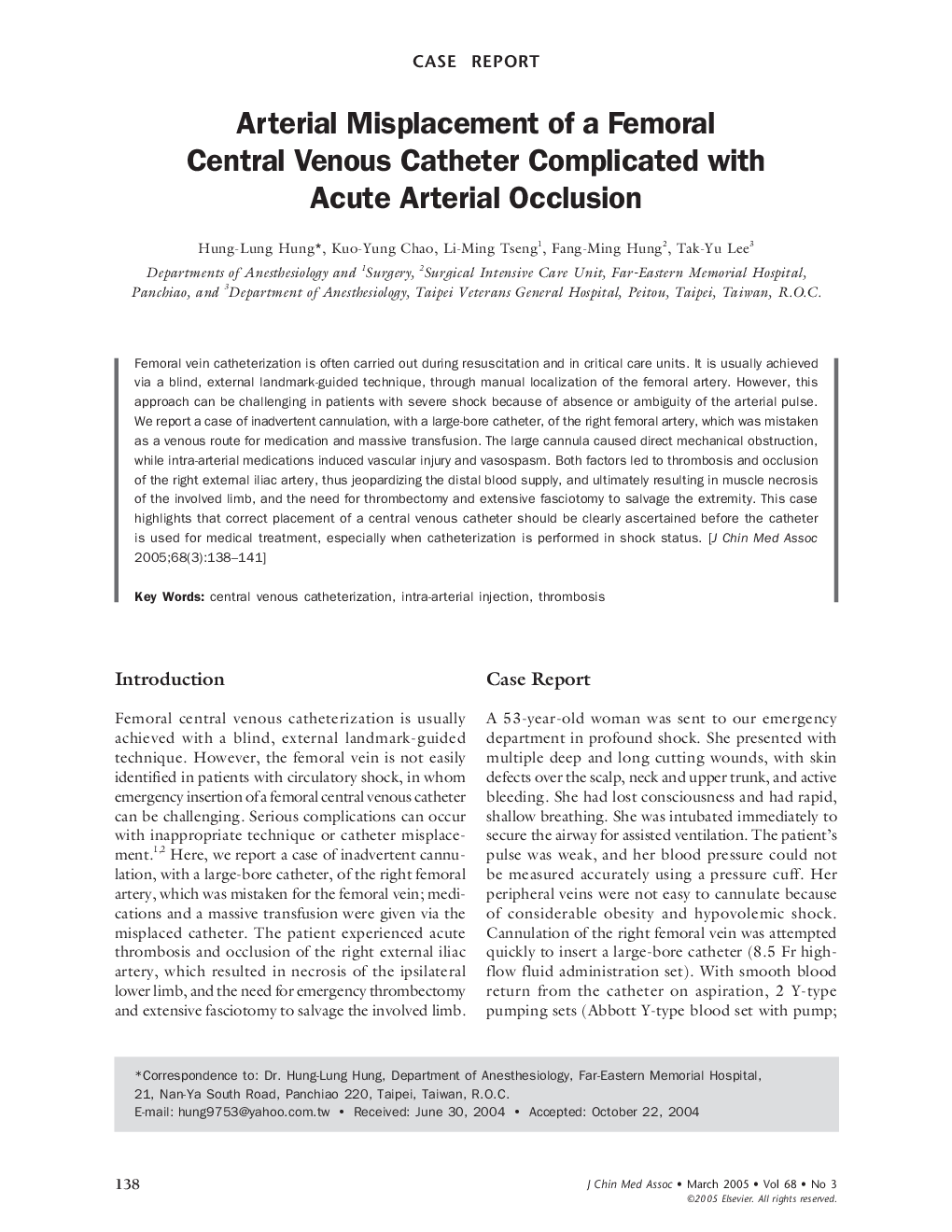| Article ID | Journal | Published Year | Pages | File Type |
|---|---|---|---|---|
| 9296290 | Journal of the Chinese Medical Association | 2005 | 4 Pages |
Abstract
Femoral vein catheterization is often carried out during resuscitation and in critical care units. It is usually achieved via a blind, external landmark-guided technique, through manual localization of the femoral artery. However, this approach can be challenging in patients with severe shock because of absence or ambiguity of the arterial pulse. We report a case of inadvertent cannulation, with a large-bore catheter, of the right femoral artery, which was mistaken as a venous route for medication and massive transfusion. The large cannula caused direct mechanical obstruction, while intra-arterial medications induced vascular injury and vasospasm. Both factors led to thrombosis and occlusion of the right external iliac artery, thus jeopardizing the distal blood supply, and ultimately resulting in muscle necrosis of the involved limb, and the need for thrombectomy and extensive fasciotomy to salvage the extremity. This case highlights that correct placement of a central venous catheter should be clearly ascertained before the catheter is used for medical treatment, especially when catheterization is performed in shock status.
Related Topics
Health Sciences
Medicine and Dentistry
Medicine and Dentistry (General)
Authors
Hung-Lung Hung, Kuo-Yung Chao, Li-Ming Tseng, Fang-Ming Hung, Tak-Yu Lee,
